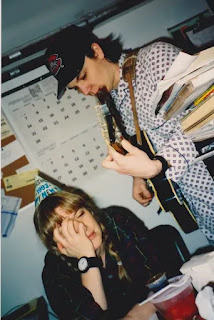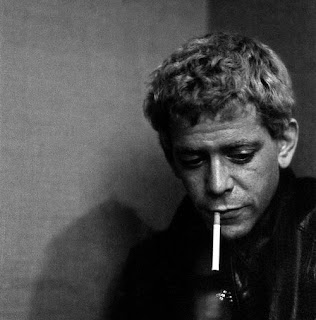
Bad movies are very common in Dennis Quaid’s filmography, particularly recently, but it is rare for him to actually give a bad performance. When you write a great deal about acting, a question like “Is there a good actor with such a terrible filmography as Dennis Quaid?” is the kind of thing that can keep you up at night. When I’ve posed this question to colleagues over the years, some doubt my assertion that Quaid is a good actor, others that his filmography is uniquely bad, but I think any honest examination of his work will lead to the same conclusion. Let’s start with the filmography. He’s had over 110 film roles with very, very few high points. In stark contrast to other prolific actors like Nicolas Cage, Quaid hasn’t led a classic or important film, and he’s made a lot of terrible ones. Many of his films don’t even have the decency to be worth hate-watching and instead, like The Long Riders and Wyatt Earp, are merely boring. Yet he is almost always good in these films. Often, he’s the best thing about them.

In The Day After Tomorrow, he undergirds Jack Hall, the sad dad and prophetic scientist, with real vulnerability and need. His performance as the tubercular Doc Holliday in Wyatt Earp, which required a punishing physical transformation, is electrifying in its death-soaked charisma. Unfortunately for Quaid, his scene partner for much of the film is Kevin Costner, whose performance seems borderline comatose. Quaid managed to make another epic during this period, 1983’s The Right Stuff, directed by Philip Kaufman. The film, originally a box-office flop, now a beloved and influential classic, chronicles the true story of the first Americans in space. Quaid is again not the film’s focus; instead, he plays Gordon Cooper, an Air Force test pilot whose nickname (Hot Dog) tells you a lot about him. Hot Dog is filled with the same yearnings, ambitions, and rage as Mike from Breaking Away.

After The Right Stuff, Quaid began racking up leading roles. He starred in three sci-fi films: Dreamscape, Enemy Mine, and Innerspace. The latter, which co-starred Martin Short and Meg Ryan, remains surprisingly charming. In it, Quaid plays Lt. Tuck Pendleton, a down-on-his-luck Air Force test pilot. The Rookie is a sentimental, sun-dappled story of a man who, in early middle age, makes a long-shot attempt to pitch in Major League Baseball. This Disney film would not work were it not for Quaid’s world-weary turn as Jim Morris. He eschews the kind of big, star-centered performance he could have given and instead embodies Jim Morris as a real man with real struggles, working his ass off to make his dream come true. Quaid doesn’t flash that typical smile once in Flesh and Bone. Instead, he plays the damaged Arlis Sweeney, a drifter who stocks vending machines in rural Texas. Arlis is a decaying isotope of a man, the leftovers of a childhood spent with his criminal father Roy (James Caan) and, as a result, being witness to a horrible crime. Instead of wearing his heart on his sleeve, he keeps everything inside. Instead of ambition, he has stasis.
.jpg)
Quaid was a bigger than life character as Jerry Lee Lewis in Great Balls of Fire (1989), whom he impersonated really well. Alongside, Quaid has done stellar work in supporting roles. He’s excellent in Far From Heaven, Postcards From the Edge, and Traffic. In the satirical body-horror film The Substance, he's playing an ogre of a TV executive named, unsubtly, Harvey. Quaid’s performance in The Substance is at once subtle and also so over the top it breaks the surly bonds of earth. But it is, again, exactly the right style of performance for this film. It’s that sense of fitting a genre that makes Quaid such a good actor. Put him in a blockbuster as a cardboard-cutout dad devoted to finding his kids, and he’ll make him believable. Want him to play a psychic who solves people’s issues by going into their dreams? As Dreamscape proved, he can do that too. He can be the divorced dad in a wholesome kids movie like The Parent Trap or the uptight reverend in Footloose.

Whether playing the GOP president Ronald Reagan or a sleazebag TV mogul in The Substance, he adapts himself to the project, never signaling to the audience that he thinks the work is beneath him. The vast gulf between his dedication and his judgment has resulted in a remarkably varied body of work, one that has very few good movies but even fewer bad performances. Perhaps this is why we like Quaid so much, even if getting to enjoy his acting means watching films that make us want to die: He does the work. That is the job of most actors—to do a good job day in and day out, regardless of the project. That is what it means to be a professional, rather than a star. A professional spends their life working in a largely interpretive art form in an industry that rarely grants them much control over the final product. Few of them win awards. Many of them, like Quaid, wind up in a lot of crap. But there is beauty to be found in the work of artists who always show up, even, or maybe especially, when the project doesn’t deserve it.

We’ve all dreamt, at one time or another, of being better versions of ourselves. But the notion of relentless self-improvement is something filmmaker Coralie Fargeat pushes to the extreme in her new feminist film The Substance. A bone-chilling body horror that’ll make even Cronenberg disciples squirm, it stars Demi Moore as Elisabeth Sparkle, a Jane Fonda-esque, ex-Hollywood movie star who’s made to believe that she’s aged out of the industry by a slimy executive, pointedly named Harvey (Dennis Quaid). Shaken by her careless discardment and more self-conscious than ever, Elisabeth is drawn in by a mysterious advert for The Substance, a fluoro-green fluid that, if taken correctly, will produce “a better you.” A younger, more beautiful you.

Enter Sue, played by Margaret Qualley, a younger doppelganger who promptly replaces Elisabeth as the face of the hugely popular televised exercise class she once taught and embodies every facet of her life – with only the halo of youth as her shield. Fargeat makes the horror of insecurity tangible, blowing it up into a living, breathing monster. Because injecting The Substance comes at a cost: Sue and Elisabeth can only swap roles for two weeks at a time. And increasingly, Elisabeth and Sue are at odds, battling for dominance and power.

Whereas Elisabeth clearly loathed Harvey, shallow Sue seems flattered by his leering attentions and adulation. And although the faceless suits at The Substance HQ repeatedly instruct Elisabeth to work with Sue rather than against her, that’s easier said than done when you’re literally being ripped apart from the inside out. Self-inflicted violence, ultimately, sits at the very heart of The Substance. But Fargeat has brought it to life as a bitingly satirical, absurdly funny, nauseatingly gory (we can’t emphasise that enough) film version. Coralie Fargeat said in the Q&A at Toronto International Film Festival that she was influenced by Requiem for a Dream and Cronenberg's body horror.

"I love genre films that allow you to dive into an alternate reality that’s so far from the real world, where the rules can be whatever you want them to be. There’s also Robocop by Verhoeven or Kubrick’s A Clockwork Orange. I’m interested in societal violence and how that gives way to horror. I think that’s what generates real horror–society. The fear of invasion. That’s what I relate to most strongly." And her advice to actresses Demi Moore and Margaret Qualley was: "I hope that we can feel at ease in our bodies the way we want. I hope we feel empowered to feel sexy or not to feel sexy, that we don’t feel judged, that we feel free. But In The Substance, when the characters finally like themselves, is when both become a monster. So here's a huge tongue-in-cheek element to their story, and I think that is very key to the point of the film.” Source: slate.com
















.jpg)








.jpg)




















.jpg)

















